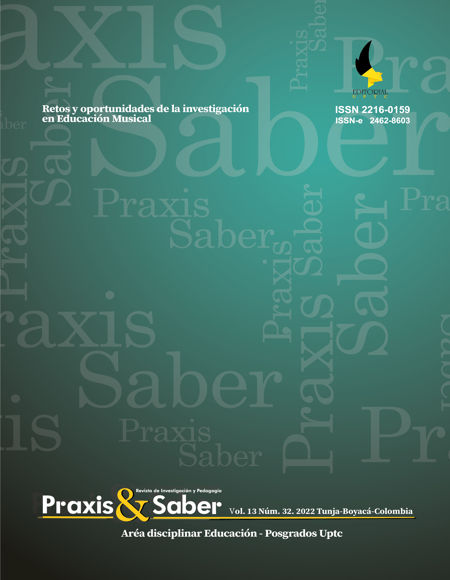Desarrollo de la educación superior en las regiones de Rusia: número de personal pedagógico

Resumen
El propósito de la investigación fue evaluar los indicadores que caracterizan el número de docentes en las universidades y otras instituciones de educación superior (IES) en las regiones de Rusia. Estos indicadores fueron: (1) el número de maestros por cada mil residentes en edad laboral en cada región, (2) el número promedio de maestros por IES en la región, (3) la proporción de maestros con un doctorado en ciencias (DSc) y un doctorado (PhD) en el número de maestros de IES en la región y (4) el número de estudiantes por maestro de IES. Se utilizó información estadística oficial de las 82 regiones de Rusia. Se encontró que, en promedio, hay un poco más de dos maestros trabajando en IES por cada mil residentes en edad laboral. El número medio de maestros por IES en Rusia es de 158. En las universidades, la media de estudiantes por profesor es superior a 20. El enfoque metodológico propuesto y los resultados obtenidos son una novedad científica, ya que la evaluación de las características regionales del número de docentes en las regiones de Rusia no se ha llevado a cabo antes.
Palabras clave
instituciones de educación superior, universidades, personal docente, estudiantes, desarrollo regional
Citas
- Abel, J., & Deitz, R. (2011). Do colleges and universities increase their region’s human capital? Journal of Economic Geography, 12(3), 667-691. https://doi.org/10.1093/jeg/lbr020 DOI: https://doi.org/10.1093/jeg/lbr020
- Afeez, B., Maxwell, O., Otekunrin, O., & Happiness, O. (2018). Selection and Validation of Comparative Study of Normality Test. American Journal of Mathematics and Statistics, 8(6), 190-201.
- Anisimova, E., & Babich, S. (2016). Study of the main trends in the field of higher education. Economics and Management in the XXI Century: Development Trends, (33-2), 154-158.
- Cervantes, M. (2017). Higher education institutions in the knowledge triangle. Foresight and STI
- Governance, 11(2), 27-42. https://doi.org/10.17323/2500-2597.2017.2.27.42 DOI: https://doi.org/10.17323/2500-2597.2017.2.27.42
- Ciriaci, D. (2014). Does university quality influence the interregional mobility of students and graduates? The case of Italy. Regional Studies, 48(10), 1592-1608. https://doi.org/10.1080/00343404.2013.821569 DOI: https://doi.org/10.1080/00343404.2013.821569
- Cour des Comptes. (2019). La mobilité internationale des étudiants : S'organiser pour les défis à venir. https://www.vie-publique.fr/sites/default/files/rapport/pdf/194000726.pdf
- Douglass, J. (2011). Higher education’s new global order: How and why governments are creating structured opportunity markets. Educational Studies Moscow, (1), 73-98. https://doi.org/10.17323/1814-9545-2011-1-73-98 DOI: https://doi.org/10.17323/1814-9545-2011-1-73-98
- Federal State Statistics Service. (2021). https://gks.ru/bgd/regl/B19_16/Main.htm
- Guri-Rosenblit, S., Sebkova, H., & Teichler, U. (2007). Massification and diversity of higher education systems: interplay of complex dimensions. Higher Education Policy, 20(4), 373-389. https://doi.org/10.1057/palgrave.hep.8300158 DOI: https://doi.org/10.1057/palgrave.hep.8300158
- Jaspers, K. (1960). The Idea of the University. Beacon Press.
- Kirillina, Y. (2015). Quality in higher education in quantitative indicators. Problems and Prospects of Education Development in Russia, (33), 132-136.
- Kurilova, O. (2020). Features of changes in the number and structure of university teachers. Regional Bulletin, 17(56), 48-49.
- Lomonosov, A. (2013). Definition of students’ number standards for one staff position of the teaching staff. Creative Economy, 12(84), 102-111.
- Maksimova, I. (2019). Prospects for increasing the competitiveness of higher education in Russia. Scientific Bulletin of the Volgograd Branch of the RANEPA, (2), 81-93.
- Melikyan, A. (2021). Statistical analysis of the dynamics of performance indicators of Russian universities. Questions of Statistics, 28(1), 38-49. https://doi.org/10.34023/2313-6383-2021-28-1-38-49 DOI: https://doi.org/10.34023/2313-6383-2021-28-1-38-49
- Ministry of Science and Higher Education of the Russian Federation. (2021). Official statistical information on additional professional and higher education. https://minobrnauki.gov.ru/action/stat/highed/
- OECD. (2019). Education at a Glance 2019: OECD Indicators. OECD Publishing. https://doi.org/10.1787/f8d7880d-en. DOI: https://doi.org/10.1787/f8d7880d-en
- Pinkovetskaia, I., & Slepova, V. (2018). Estimation of Fixed Capital Investment in SMEs: the Existing Differentiation in the Russian Federation. Business Systems Research, 9(1), 65-78. https://doi.org/10.2478/bsrj-2018-0006 DOI: https://doi.org/10.2478/bsrj-2018-0006
- Pinkovetskaia, I., Lebedev, A., Slugina, O., Arbeláez, D, & Rojas, M. (2021). Informal Personal Financing of Entrepreneurs: Gender Characteristics. Universal Journal of Accounting and Finance, 9(3), 442-449. https://doi.org/10.13189/ujaf.2021.090319 DOI: https://doi.org/10.13189/ujaf.2021.090319
- Popova, S., & Vdovina, E. (2017). Specificity of higher professional education in the Penza region. Bulletin of Penza State University, 4(20), 8-11.
- Rahman, M., & Wu, H. (2013). Tests for normality: A comparative study. Far East Journal of Mathematical Sciences, 75(1), 143-164.
- Razali, N., & Yap, B. (2011). Power comparisons of Shapiro-Wilk, Kolmogorov-Smirnov, Lilliefors and Anderson-Darling tests. Journal of Statistical Modeling and Analytics, 2(1), 21-33.
- Romanov, E. (2018). Threats to the personnel potential of regional universities. Economy of the region, 14(1), 95-108. https://doi.org/10.17059/2018-1-8 DOI: https://doi.org/10.17059/2018-1-8
- Seier, E., & Bonett, D. (2002). A test of Normality with high uniform power. Computational Statistics & Data Analysis, (40), 435-445. DOI: https://doi.org/10.1016/S0167-9473(02)00074-9
- Stiglitz, J. (2014). Creating a Learning Society: A New Approach to Growth, Development, and Social Progress. Columbia University Press. DOI: https://doi.org/10.7312/stig15214
- Unger, M., & Polt, W. (2017). The knowledge triangle between research, education and innovation – A conceptual discussion. Foresight-Russia, (2), 10-26. https://doi.org/10.17323/2500-2597.2017.2.10.26 DOI: https://doi.org/10.17323/2500-2597.2017.2.10.26
- Vadimova, I. (2015). Transition to new relations number of teachers and students. Counselor in the field of education, (6), 14-18.
- Vardanyan, G., & Keshishyan, G. (2020). Comparative statistical analysis of the dynamics number and structure of the professor-teaching staff of higher educational institutions of the RF and RA for the past decade. In The collection: Technologies in education - 2020. Collection of materials of the International Scientific and Methodological Conference. Novosibirsk (pp. 384-393).
- Vlasova, O. (2021). The influence of transformation processes in the higher education system on the number of its staff. Baltic Humanitarian Journal, 1(34), 59-62. https://doi.org/10.26140/bgz3-2021-1001-0013 DOI: https://doi.org/10.26140/bgz3-2021-1001-0013
- Yap, B, & Sim, C. (2011). Comparisons of various types of normality tests. Journal of Statistical Computation and Simulation, 81(12), 2141-2155. DOI: https://doi.org/10.1080/00949655.2010.520163
- Yazici, B., & Asma, S. (2007). A comparison of various tests of normality. Journal of Statistical Computation and Simulation, 77(2), 175-183. DOI: https://doi.org/10.1080/10629360600678310
